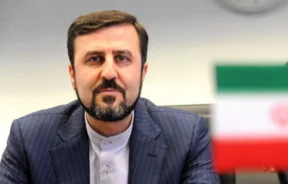The Mysterious Cemeteries of Iran: Tales from History and Legend
WANA (Sep 29) – Adventure and mystery genres have always held a unique allure. Scenes in movies and cartoons where characters venture into dark, mysterious cemeteries heighten suspense and fear.
But what if these stories didn’t just belong to films, but were rooted in reality? In this article, we take you into the world of Iran’s mysterious cemeteries—places not only steeped in history but also filled with strange and frightening rumors and beliefs.
Sefid Chah Cemetery: Where the Dead Do Not Decay!
In Behshahr, there is a cemetery called “Sefid Chah.” Locals compete to bury their loved ones here because they believe that the dead never decompose in this cemetery.
The reason for this belief lies in the white, lime-like soil of the area. Research has shown that the high lime content in Sefid Chah’s soil indeed delays the decomposition of bodies.
Interestingly, the burial stones, brought from nearby mountains, also play a role in preserving the corpses longer. The standing gravestones, adorned with intricate Islamic, geometric, and symbolic carvings, make this cemetery one of the most mysterious in Iran.
Due to its long history, this cemetery was added to Iran’s national heritage list in 2003. It dates back to the Timurid era and is considered one of the earliest Muslim cemeteries, with a history spanning 800 years.
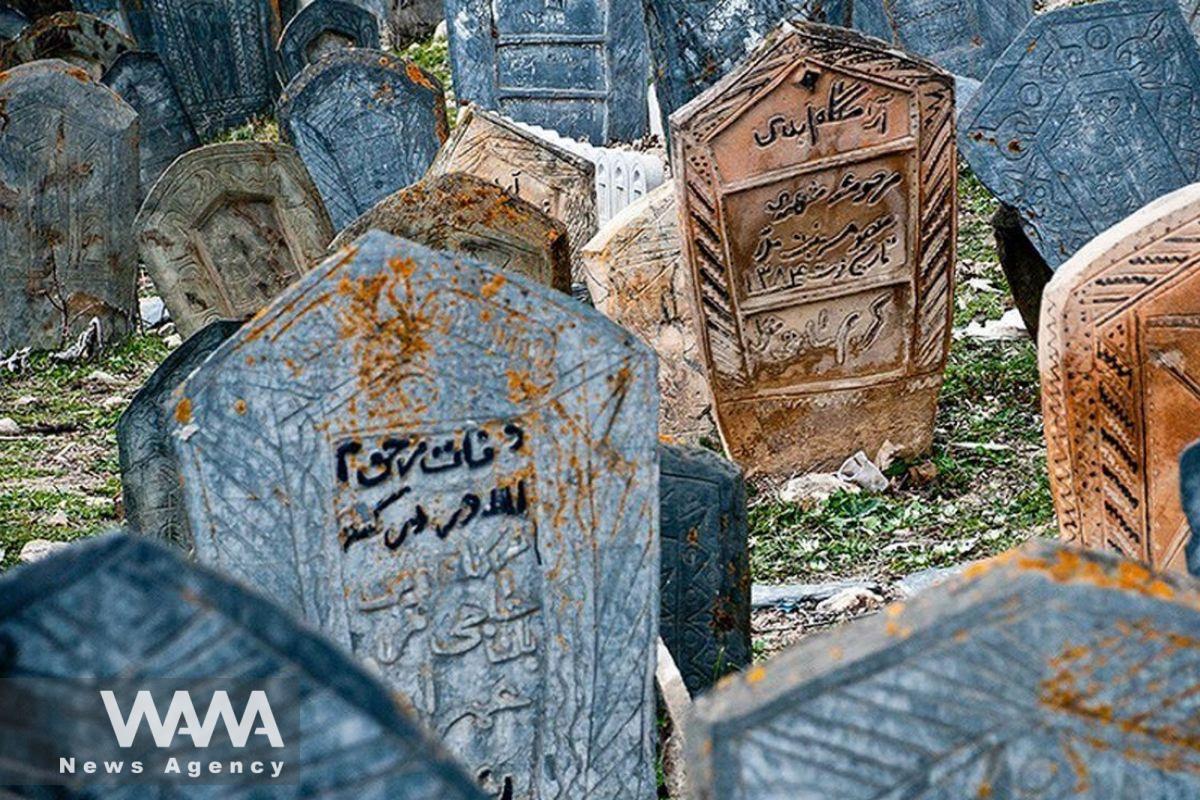
Sefid Chah Cemetery/ Social media/ WANA News Agency
Baghleq Cemetery: Wooden Poles for Protection from the Grave’s Torment
At the entrance of Baghluq village, in North Khorasan, lies a cemetery where dry, ribbed wooden poles catch the eye of every visitor. According to local belief, these poles were originally planted as saplings to protect the deceased from the torment of the grave.
Over time, they grew into tall, dry poles with special carvings. Despite having access to various types of gravestones, the villagers continue to use these wooden poles to mark graves. This enduring tradition adds an air of mystery to the cemetery.
The Cemetery of the Jinns in Tis: A Gateway to the Supernatural
In the heart of the 2,500-year-old village of Tis in Chabahar lies a silent and mysterious cemetery that locals call the “Cemetery of the Jinns.” The massive gravestones and the unique method of excavation have made this place one of the most enigmatic cemeteries in Iran.
Local beliefs hold that these graves belong to jinns, as carving such large stones is no easy task, and it is said that at night, the jinns wail and lament over these graves.
According to local folklore, if someone approaches the cemetery in the dark, they will be cursed by the jinns and die within a few days. However, the scientific explanation is that these graves were constructed to protect the bodies from wild animals.
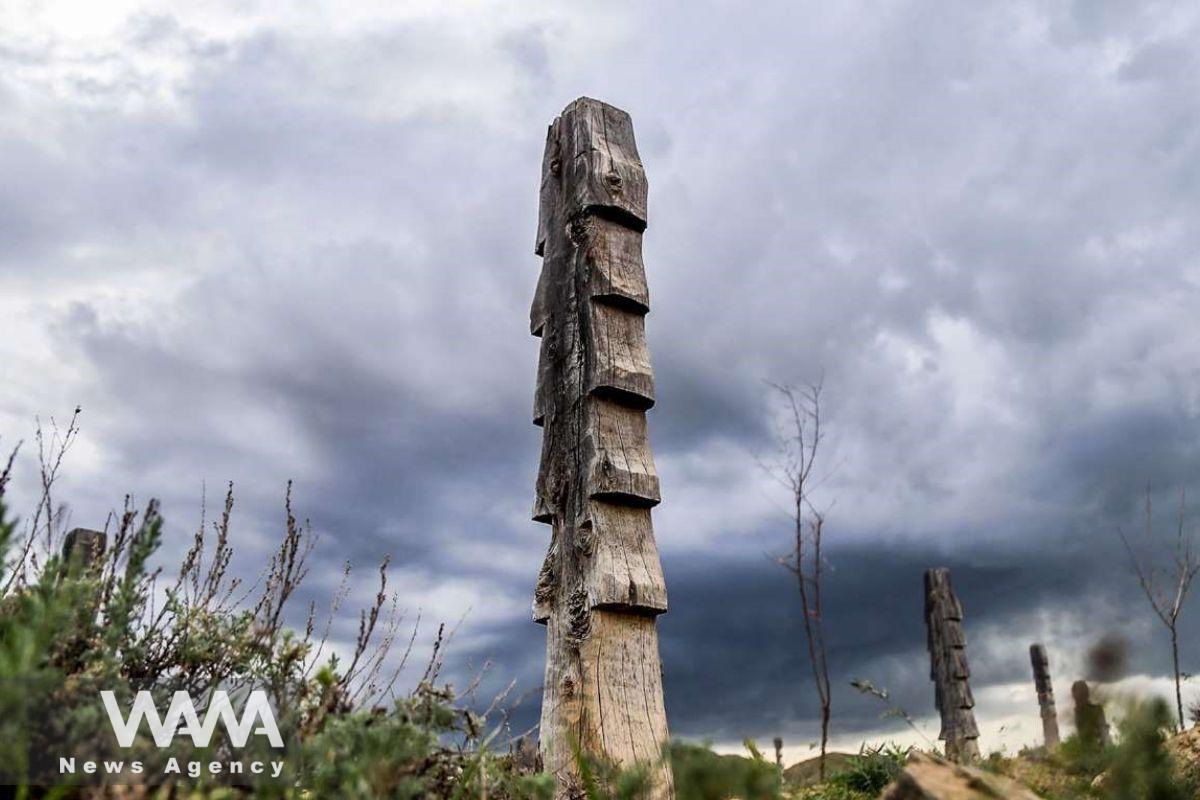
Baghleq Cemetery/ Social media/ WANA News Agency
Haftad Mullah Cemetery: Hidden Secrets within the Rocks of Balochistan
Located 80 kilometers from Zahedan, the 800-year-old Haftad Mullah Cemetery is one of the mysterious and captivating attractions of Mirjaveh.
Built into the rocks and inspired by the architecture of Cyrus the Great’s tomb, this cemetery holds many untold stories. Some say that Zoroastrian priests sought refuge here after the arrival of Islam and were buried in this place.
Another belief suggests that the people of the area buried their dead in elevated locations to protect them from floods.
In 2001, this cemetery was also registered as a national heritage site of Iran. Despite this recognition, Haftad Mullah remains shrouded in mystery and legend.
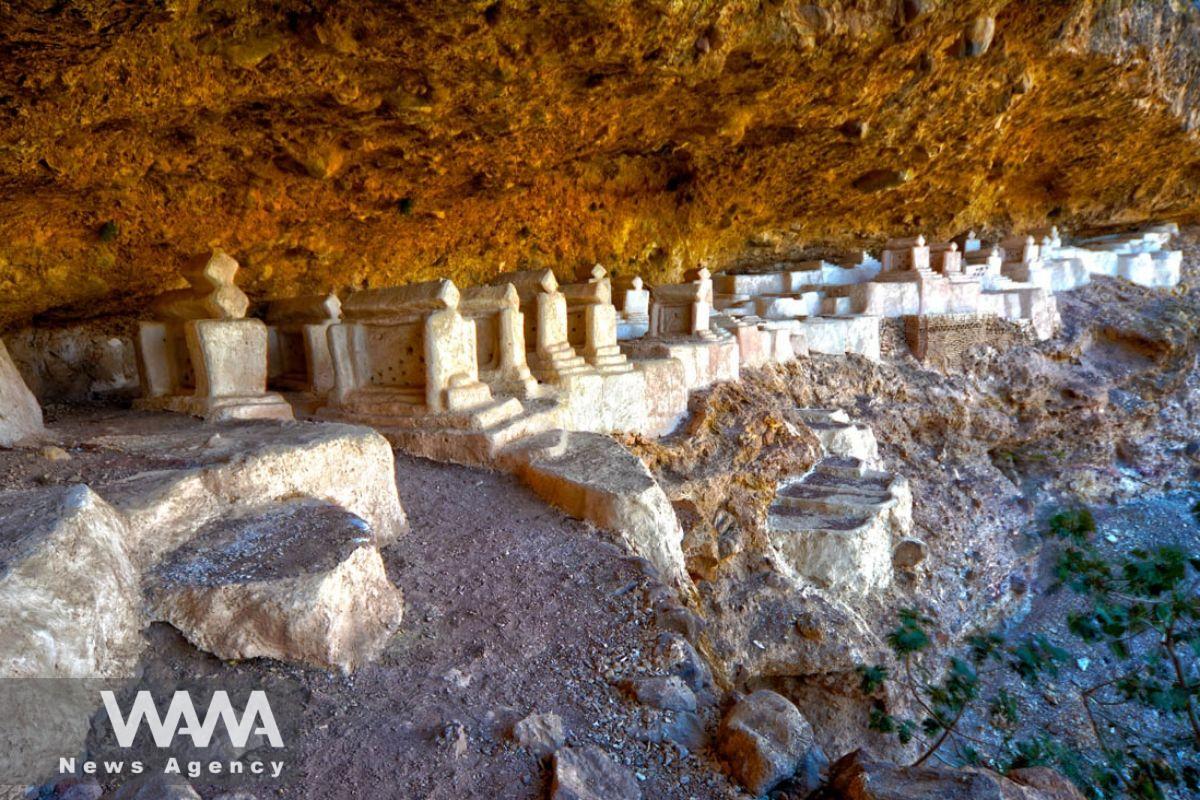
Haftad Mullah Cemetery/ Social media/ WANA News Agency
The Historic Site of Shahr-e Yeri: The Mystery of the Mouthless Statues
Near the village of Pirazmeyan in Ardabil Province lies the historic site of Shahr-e Yeri, dating back to 1,400 BCE. Here, you will find graves from one to two thousand years before Christ and stone statues depicting human figures without mouths.
These statues, ranging in size from 40 to 360 centimeters, capture the attention of every visitor. Do these stone carvings hold a hidden message? Did the mouthless figures have secrets they wished to keep? These questions remain unanswered, making Shahr-e Yeri one of the most mysterious ancient sites in Iran.
The Stone Lions of the Nomads: A Symbol of Courage on the Graves of the Great
In the provinces of Chaharmahal and Bakhtiari and Khuzestan, there are cemeteries adorned with stone lion statues. These lions, known locally as “Bard Shir,” are placed on the graves of prominent figures of the Bakhtiari tribe.
The lion, a symbol of bravery and strength among the Bakhtiari people, not only appears on the graves of their leaders but is also woven into their carpets and rugs.
Each of these stone graves tells a story of valor and pride, reflecting how respect for ancestors and tribal leaders continues to thrive among Iran’s nomads.
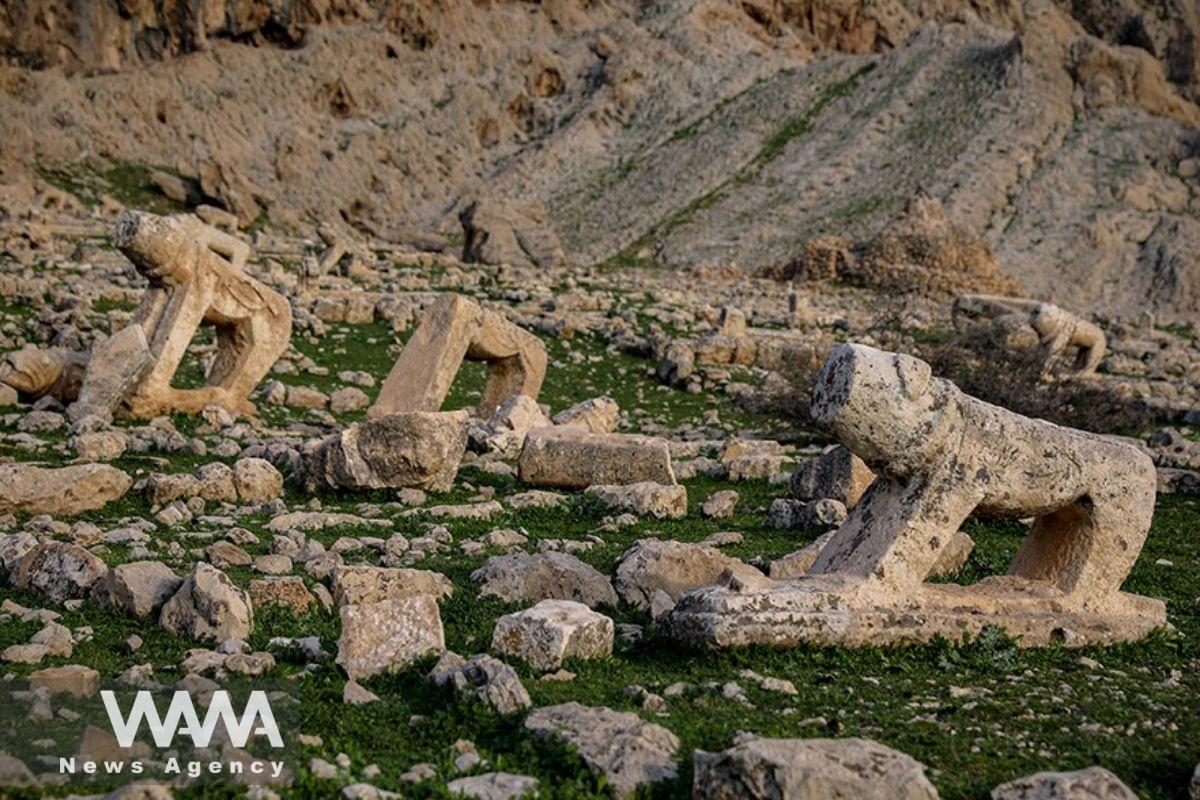
The Stone Lions of the Nomads Cemetery/ Social media/ WANA News Agency
Khaled Nabi Cemetery: Mysterious Statues Amid the Mountains of Golestan
Khaled Nabi Cemetery, nestled in the Gogjeh Dagh Mountains of Golestan Province, is one of the most enigmatic places in Iran. The site is home to peculiar stone statues, some of which resemble male and female body parts.
Local folklore suggests that these statues represent men and women from ancient times. Various legends surround these graves; some believe the statues depict men wearing hats with shawls around their waists, while others see them as resembling crosses.
Although the true meaning behind these statues remains unknown, Khaled Nabi Cemetery continues to be one of Iran’s most fascinating and mysterious historical sites.
These mysterious cemeteries offer just a glimpse into a hidden world where history and legend intertwine. Each of these locations holds a unique and strange story that blurs the line between reality and myth.
If you ever seek adventure in the real world, visiting these cemeteries will surely be an unforgettable experience. But remember, as often warned in stories and films, it’s best not to visit them at night!
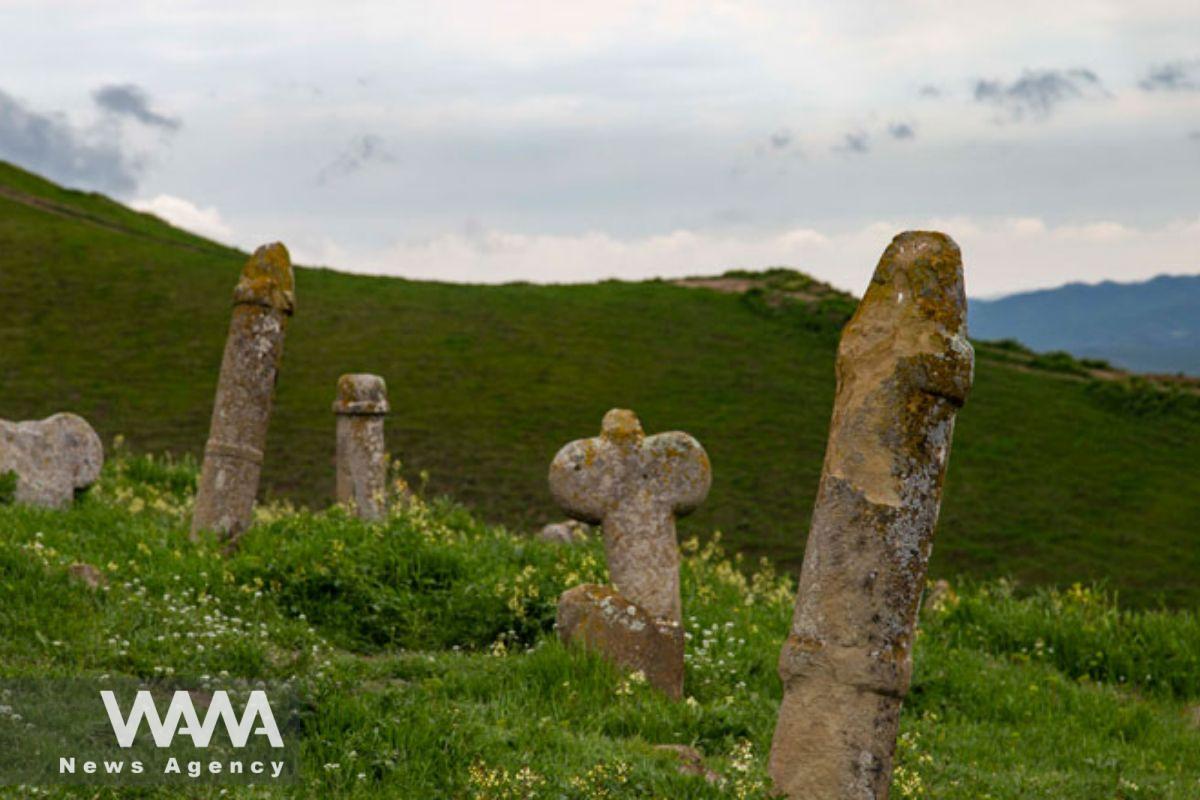
Khaled Nabi Cemetery/Social media/ WANA News Agency







